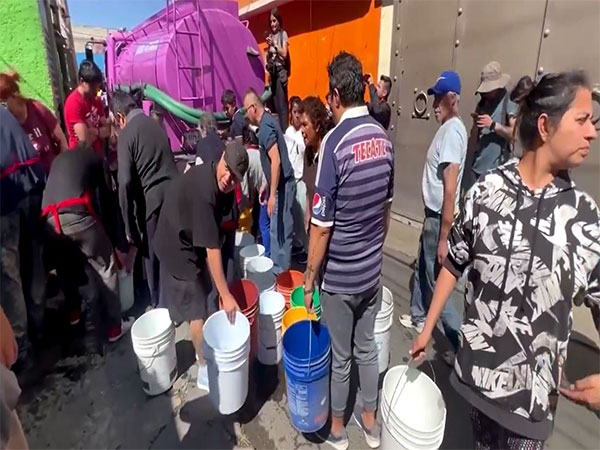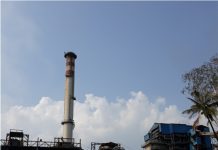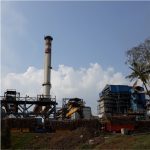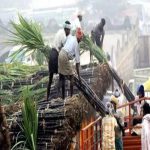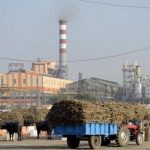Mexico City [Mexico], February 26 (ANI): Mexico City, one of the world’s biggest cities, with a population nearing 22 million, is on the brink of a severe water crisis due to a combination of factors, including geographic challenges, rapid urbanisation, and ageing infrastructure worsened by the effects of climate change, as reported by CNN.
Years of insufficient rainfall and rising temperatures have strained the city’s water system, which is already struggling to meet escalating demand. Authorities have imposed significant restrictions on water extraction from reservoirs in response to dwindling supplies.
Residents like Alejandro Gomez, from Mexico City’s Tlalpan district, have endured months without consistent access to running water. Sometimes it comes on for an hour or two, but only a small trickle, barely enough to fill a couple of buckets. Then nothing for many days, as per CNN.
Gomez, who lives in Mexico City’s Tlalpan district, doesn’t have a big storage tank so he can’t get water truck deliveries — there’s simply nowhere to store it. Instead, he and his family eke out what they can buy and store.
When they wash themselves, they capture the runoff to flush the toilet. It’s hard, he told CNN. “We need water; it’s essential for everything.”
Water shortages are not uncommon in this neighbourhood, but this time feels different, Gomez said. “Right now, we are getting this hot weather. It’s even worse; things are more complicated.”
According to CNN, experts warn that the situation has reached critical levels, with Mexico City possibly facing “day zero” within months, where water reserves may be insufficient to meet the needs of its population.
Local media widely reported in early February that an official from a branch of Conagua said that without significant rain, “day zero” could arrive as early as June 26.
But authorities have since sought to assure residents that there will be no day zero. In a press conference on February 14, Mexican President Andres Manuel Lopez Obrador said that work was underway to address the water problems.
Mexico City’s mayor, Marti Batres Guadarrama, said in a recent press conference that reports of day zero were “fake news” spread by political opponents.
Conagua declined CNN’s interview requests and did not answer specific questions on the prospect of day zero.
But many experts warn of a spiralling crisis. Mexico City could run out of water before the rainy season arrives if it carries on using it in the same way, the head of economic growth and environment, Sosa-Rodriguez, said. “It’s probable that we will face day zero,” she added.
The city’s unique geographical and environmental challenges, compounded by historical urban development decisions, have exacerbated the crisis. Mexico City, originally built on a high-altitude lake bed, faces rapid subsidence, seismic risks, and vulnerability to climate change impacts.
The historical legacy of altering natural waterways and neglecting environmental considerations has exacerbated the city’s vulnerabilities. Over-reliance on underground aquifers and inefficient water distribution systems have further strained the already fragile water supply.
The Cutzamala water system, a vital source for the city, is operating at a historic low of 39% capacity due to severe drought conditions. Officials have implemented stringent measures to mitigate the crisis, including significant reductions in water allocations.
In a statement on its website, Conagua said it is undertaking a 3-year project to install, develop and improve water infrastructure to help the city cope with decreases in the Cutzamala system, including adding new wells and commissioning water treatment plants.
But in the meantime, tensions are rising as some residents are forced to cope with shortages, while others — often in the wealthier enclaves — remain mostly unaffected. (ANI)

